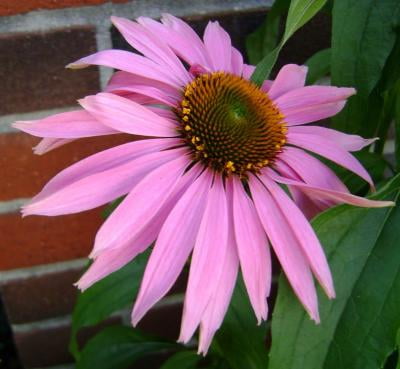


The largest species of rudbeckias for the garden is Rudbeckia hirta. ‘Goldsturm’ can be grown from seed or purchased as a container-grown plant. The 2- to 3-foot tall plants are long-lived and reliably produce an abundance of blooms from midsummer through September. This award-winning cultivar has proven to be a workhorse in the garden. sullivantii ‘Goldsturm’ which translated means Golden Storm, no doubt referring to its masses of flowers with pale gold petals. A popular cultivar of this species is Rudbeckia fulgida var. Despite its name, the petals of these low-maintenance perennial are not true orange but a warm yellow. Rudbeckia fulgida is the first of these two species and often referred to in gardening circles as orange coneflower. Orange coneflower, Rudbeckia fulgida Ait. In garden use, two of these 25 species of Rudbeckia overshadow the rest in popularity. All are native to North America and are generally found growing in the East and Midwest, though they have now naturalized throughout most of the United States and can be seen in fields and gardens from Canada to Mexico. There are 25 species of Rudbeckia including perennials, biennials and annuals. By the mid-1800’s, the rudbeckia had found its way back to America and was described by one early garden writer as “the darling of the ladies who are partial to yellow.” The plant was shared with others including John Parkinson, the famous English herbalist and an early botanist, and was soon popular in English gardens. They were not considered worth of occupying garden space until much later.Īn early selection ( Rudbeckia laciniata) was sent by French settlers in the “New World” to British plant collector John Tradescant. The roots and flowers were made into teas and compresses to treat a variety of ailments including snake bites, worms, earaches, indigestion, burns and sores. Growing wild throughout the prairies and plains of the Midwest, rudbeckia was used medicinally by many Native Americans to care for both people and horses. Today they are most often called coneflowers, black-eyed Susans, gloriosa daisies or(simply) rudbeckia. Rudbeckias have been known by a variety of common names including conedisk, conedisk sunflower, tall coneflower, and brown-eyed Susans. Linnaeus told Rudbeck that “so long as the earth shall survive, and each spring shall see it covered with flowers, the Rudbeckia will preserve your glorious name.” The genus name Rudbeckia honored Linnaeus’s botany professor, Olaf Rudbeck, and Rudbeck’s father who had founded the botanical garden at Uppsala University in Sweden. A member of the Asteracea or composite family, rudbeckia and was given its scientific name in 1740 by famed botanist Carlos Linnaeus who was often called the ‘Father of Plant Taxonomy’. Plants have coarse-textured, hairy green leaves. Rudbeckia has daisy-like flowers that come in single, semi-double and fully-double forms in a range of colors from lemon-yellow to gold, chestnut, mahogany, and bronze. Rudbeckias are easy to grow, adapt to a wide range of garden conditions, have few insect or disease problems, and require only minimal care for a spectacular show of color summer through fall. It produces an abundance of brightly-colored flowers that reflect the brilliant yellows and oranges of the summer sun thus adding cheeriness and warmth to any planting. Widely known as black-eyed Susan or coneflower this native, all-American treasure is a reliable choice to flourish in the garden. The National Garden Bureau has chosen 2008 as the year to promote rudbeckia as a flowering plant this year. Black-eyed susan flower, Rudbeckia hirta L.


 0 kommentar(er)
0 kommentar(er)
